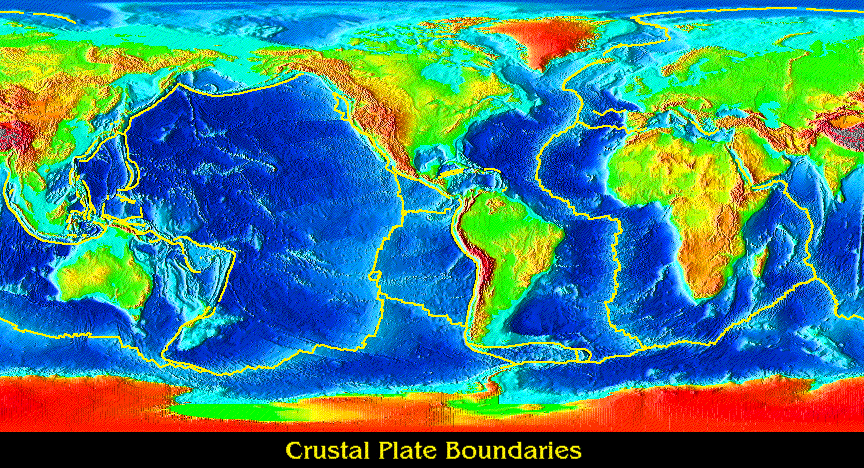
Central questions for our study of :
GEOlOGY
Why is it important to study the materials which make up the earth?
What are some geological hazzards that I should be aware of?
How are rocks and minerals dynamic?

The above image shows the major tectonic plate boundaries. Both geophysical and fossil data support the idea that the contents were all joined together forming a 'super continent' approximately 180 million years ago.
Common Geology Misconceptions
(However--any Newtown High School student can give you the scientifically accepted explanation)
MISCONCEPTION |
SCIENTIFICALLY ACCEPTED EXPLANATION |
| Rocks stay the same for ever. | Rocks go through a continous cycle of weathering, deposition, melting and re-formation (not necessarily in that order). To humans, rocks may seem constant because this cycle takes place at such a slow rate. |
| Earthquakes cannot happen in Connecticut. | Earthquakes can occur anywhere there is a fault (planar breaks in rock where there is displacement along one side). When stress between the two sides of the fault is released the result is an earthquake. Generally, larger earthquakes occur along larger fault boundaries. Thus it is not as likely for Connecticut to experience earthquakes that are very large in magnitude. |
| The biggest danger of a volcano like Mt. St. Helens is the hot lava | Volcanoes like Mt. St. Helens are andesitic in their composition. This means that they are very explosive and have very little lava flow. Their most dangerous aspects are lahars (large mudflows moving down from the volcanic slope) and nuee ardentes (extremely hot gasses flowing from the volcano). |
RETURN to the NHS Earth Science Home Page